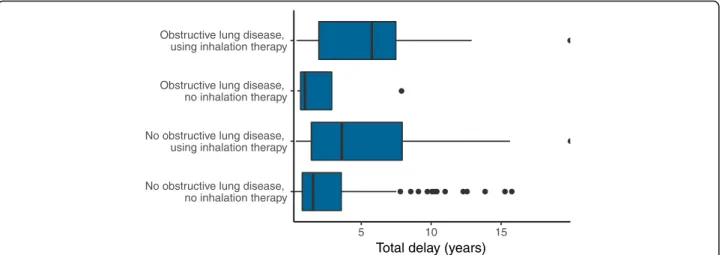Risk factors for diagnostic delay in idiopathic pulmonary fibrosis
Full text
Figure




Related documents
SNHG6 knock- down in CRC cells resulted in decreases in p-ULK1, ATG13 and ULK1 proteins which are components of the autophagy initiation complex (Fig. 4 a, b); in contrast, the
For 486 samples (82%), a single PRT assay gave the same integer copy number as MAPH/REDVR; for a further 64 samples (11%), the MAPH/REDVR copy number was confirmed by PRT on
This material is classified as Dangerous Goods Class 1 - Explosives according to The Australian Code for the Transport of Dangerous Goods by Road and Rail (7th edition)
Kuecherer HF, Dufmman K, Schaefer E, Kuebler W: Doppler echocardiographic assessment of left ventricular filling dynamics in patients with coronary artery disease and nor- mal
A high cholesterol diet is associated with decrease in both systolic and diastolic cardiac function in rabbits as meas- ured by TDI, while ezetimibe is protective by its capacity
Methods: During a one year period, over 1,000 participants were trained in SKOOP (Skills and Knowledge on Opiate Prevention) and received a prescription for naloxone by a
During the discussions, participants were asked about factors that lead individuals to smoke crystal metham- phetamine; the process of smoking crystal methamphe- tamine; the types
Despite being heterogeneous cell populations, there is a huge need for markers to characterize and define the biological char- acteristics of tendon-derived stem cells (TDSCs) or